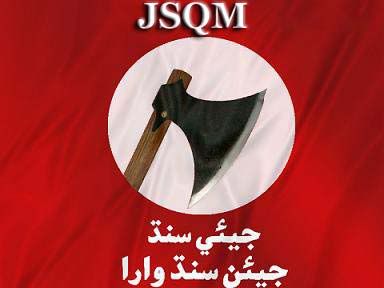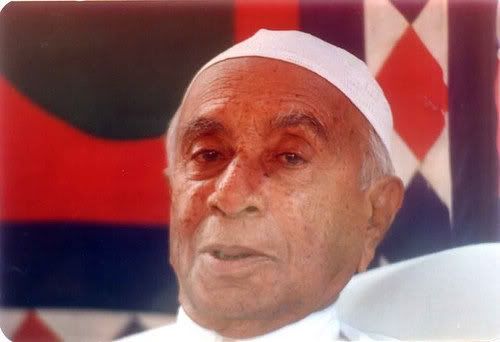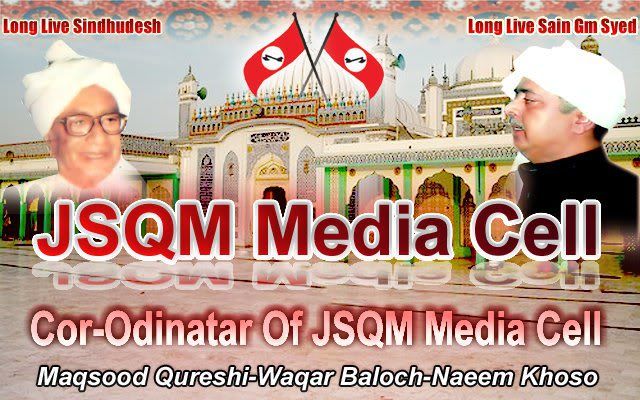Sindh's geography can be divided in three parts:
A) Varying political and geographical boundaries at different periods.
B) The cultural boundaries of Sindh and its influences at different times.
C) The present days Sindh's geographical boundaries and its various resources. If one undertakes in depth study of history of Sindh will find that Sindh's political boundaries in various periods have been expanding or shrinking. Therefore, I will narrate each period's story separately. In the various periods Sindh's political boundaries have remained as under: i) First period was the period of MOEN-JO-DARO i.e. Dravadian period.
ii) Second period was the invasion of ARIANS in Sindh and after
iii) Third period was the PERSIAN & GREEK IMPERIALISM
iv) Fourth period was the LOCAL KINGDOMS
v) Fifth period was the invasion of ARABS & after.
vi) Seventh period was British IMPERIALISM
vi) The eighth can be counted as the present Pakistani Imperialism period.
It is in the fitness of things, that each period is dealt at some length. I) MOEN-JO-DARO, DRAVADIAN PERIOD
Most of the information is supplied through archaeological findings. No written history is available. Information about Sindh Desh, its people and institutions has been collected from the Moen-Jo-Daro and Harapa findings. From the excavations whatever information has been found, it appears that at that times there was communication and commerce between both centers and was under the control of one kingdom or there were city governments in existence, cannot be ascertained. But at that time the area of Sindh was:
a) Multan Division whose area is 24824 Sq. Miles. Harapa is situated in that area.
b) Bahawalpur division area from which Indus river passes and reaches Moen-Jo-Daro city. The area of that division is 17652 Sq. Miles.
c) The Baluchistan area, in which antiquities pertaining to the civilization and citizenship are found. Its total area is 134050 Sq. Miles.
d) The present area of Sindh, from which antiquities of that civilization are found. Its area is about 57000 Sq. Miles.
e) The present Kutch district from the findings of that period are found. The total area is 8300 Sq. Miles.
f) The area of Junagarh State, from where the findings of antiquities of that period arc found. The total area is 3337 Sq. Miles.
The total area of the above mentioned areas of that period is 245163 Sq. Miles. It appears that at that time there was no such country by the name of Punjab in existence. Archeologists name the civilization and citizenship of this area as Harapa Moen-Jo-Daro civilization of Sindhu Desh. After that it appears that form the North-West a strong nation slowly invaded this area and colonized it. These people were subsequently called as Arian nation. They seem to have brought most of the village and towns built by Dravadian, under their control. In that period the government was under the control of tribal heads and in different periods, the big tribal heads established their kingdom under the suzerainty of Rajas. They ruled different areas, the boundaries of which used to change from time to time. Arian people slowly spread throughout Western and Northern parts of India. Their civilization and citizenship can be counted as Dravadian period's last remnant. This can be found out from the books of Vedas written by Aryans. Slowly they occupied the Northern and Western part of India, in which several rulers used to rule. At that time there were wars between various groups of Arians. The story of these wars is narrated in the book of 'Mahabharat', from which it can be found out that they occupied mostly those areas that were hitherto occupied by Dravadian. ii) ARYAN PERIOD'S GOVERNMENT THE AREA OF SINDHU DESH
a) Multan Division area 24824 Sq. Miles
b) Bahawalpur Division area 17652 Sq. Miles
c) Baluchistan area 134050 Sq. Miles
d) The present area of Sindh 57000 Sq. Miles
e) Kutch District's area 8300 Sq. Miles.
f) Junagarh State area 3337 Sq. Mile. The total area of that period was 240163 Sq. Miles. After that it appears that various branches of Arians' race, to have invaded Sindh which Darius One, seems to have invaded various parts of Sindh, which parts came under the control of Persian government can not be ascertained. But it seems that at that time the present Sindh, Baluchistan, some parts of Multan and Bahawalpur divisions areas may have been under their control. But it seems that the Kutch and Junagarh had not come under their control. After the invasion of Alexander the Great, more or less same areas, which were under Persian control may have come under Greek control. Therefore, it can be easily said that the areas of Persian and Greek control were smaller than the Dravadian and Arian Government's control. Though the Persians and Greeks were also branch of Arian people, yet they conquered the local people and brought them under their imperial rule. Their rule did not last long but their influences of civilization and citizenship lasted longer. On account of that some parts of Baluchistan adopted Baluchi language, which was the branch of Persian language. Yet in some parts of Baluchistan, Brohi, Dravadian and Sindhi language continue to be spoken still. It can safely be said that inspite of Persian and Greek invasion and control local Sindhi language continued its influence.
iii) THE LOCAL HINDU RULER'S DOMINANCE.
After the rule of Persian and Greek governments ended, the rule of Hindu rulers started. Maharaja Ashok, who conquered greater part of India, was a Buddhist and after him Brahmans started their dominance. During the rule of Raja Vikramajeet efforts were made to spread Hindu religion in Sindh. Both dynasties left their influence. Buddhist Stupas and Hindu Temples are the remnants of their period. Rai Sahasi and Chach dynasties were the last of the Hindu rulers. The last ruler of Sindh was Raja Dahir, who ruled over the following areas:
a) Multan division area 24824 Sq. Miles.
b) Bahawalpur area 17652 Sq. Miles.
c) Baluchistan area 132050 Sq. Miles.
d) The present Sindh area 57000 Sq. Miles.
e) Kutch area 8300 Sq. Miles.
f) Junagarh area 3337 Sq. Miles.
The total area 245163 Sq. Miles was under that Sindhi ruler. Therefore the language, culture, custom and other traditions of these areas were similar. iv) THE ARAB IMPERIALIST PERIOD.
The Arabs conquered Sindh and had control over the same areas ruled by Raja Dahir excepting the areas of Kutch and Junagarh. So during the Arab period the following areas came under their control:
a) Multan Division area 24824 Sq. Miles.
b) Bahawalpur Division area 17652 Sq. Miles.
c) The present Sindh area 57000 Sq. Miles.
d) The Baluchistan area 134050 Sq. Miles. The total area comes to 233476 Sq. Miles. In Arab period the boundaries sometimes were greater and sometimes lesser. Internal management remained in the hands of tribal chiefs. But for the collection of taxes from time to time, the Governors were appointed from Damascus or Baghdad. The general policy remained in their hands who in the various centers of Sindh, kept Arab cantonments at Multan, Alore, Barhmanabad etc., the governors used to stay in the cantonments. During the days of Soomra and Samma dynasties the areas of Sindh cannot be clearly fixed. These were the best periods of Sindh. But unfortunately the history of Sindh has not been given fair treatment. v) THE AREA OF SINDH DURING THE MUGHAL PERIOD
Though the rule of Mughals was spread over the most of the parts of Northern, Western India and Afghanistan, yet for the administrative purpose they distributed the area in various provinces. During the days of Shah Jehan and Aurangzeb, the Governorship was based on Multan under their rule. Sukkur and Thatta were smaller provinces. In view of that, the territory of Sindh can be divided in the following provinces:
a) Multan Division area 24824 Sq. Miles.
b) Bahawalpur Division area 17652 Sq. Miles
c) The present Sindh Province area 57000 Sq. Miles
d) The Baluchistan area 134050 Sq. Miles The total area of Sindh in those days was 233476 Sq. Miles After the rule of Aurangzeb the Mughal Empire began to shrink and in various parts of India local tribes began to become stronger. Therefore Sindh's territory also began to change. The Multan division came under the Sikh rule and separated from Sindh. Baluchistan came under the control of Baluch tribal chiefs and Pathan rulers. Sindh was divided in two parts: The Sindhi Kalhoras had in their possession two areas. Sukkur and Thatta districts and Dawood Potas who were the branch of the same dynasty ruled over Bahawalpur area. In those days Sindhis had control of following areas:
a) Bahawalpur area remained in the hands of Dawood Potas. Its area was 17602 Sq. Miles
b) The remaining Sindh's area remained under the Kalhora rule. Its area was 57000 Sq. Miles.
c) The Lasbella and Katchi and Sibbi areas remained under the dynasty of Jams. Its area was 79992 Sq. Miles. The total area of Sindh at that time was 154594 Sq. Miles. Though the territories mentioned above under the control of different rulers, yet all the rulers were Sindhis and languages used in those areas were Sindhi and Siraiki.
vi) SINDH'S AREA UNDER THE RULE OF BRITISH PERIOD
The Britons conquered India's various areas at different periods. In some areas they established their direct rule and in other areas they ruled through the local rulers of states. Sindh was divided in three parts
















Currently have 0 comments: